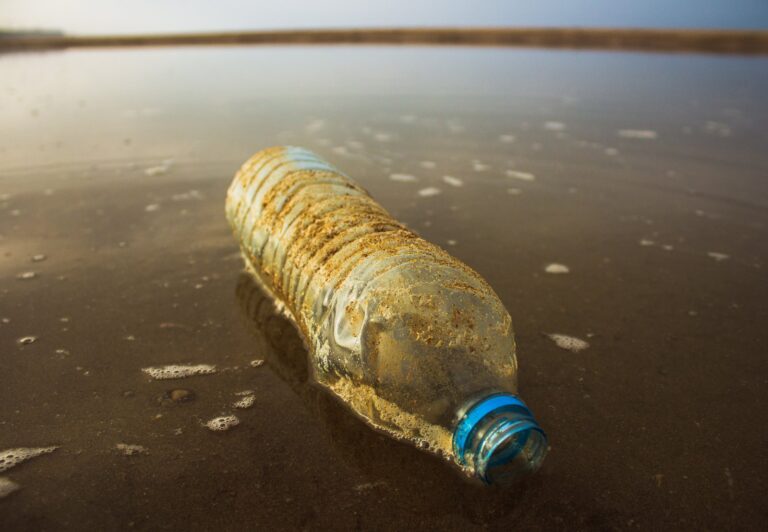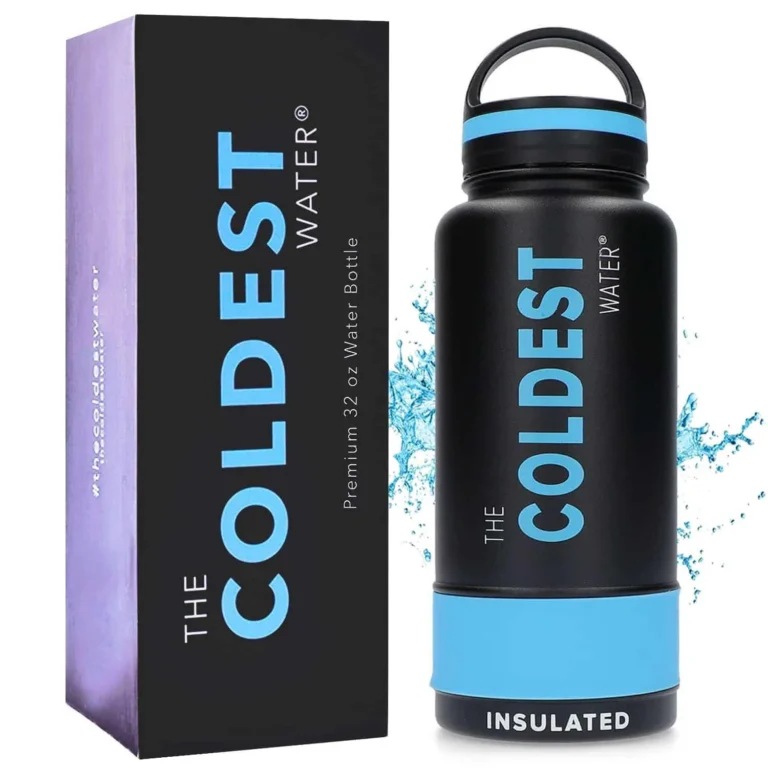Have you ever stopped to think about how many plastic water bottles you go through in a week? A month? A year? It’s no secret that plastic waste is a huge environmental issue, with millions of tons of plastic dumped into our oceans and landfills each year. One small way to make a difference is by replacing disposable plastic water bottles with reusable stainless steel ones. Not only does this simple switch reduce waste, but it also has numerous benefits for your health and wallet. In this blog post, we’ll explore the differences between plastic water bottles and stainless steel ones, and why the latter is the smarter choice.
I. Introduction
Plastic water bottles have become a popular choice for many people due to their convenience and affordability. However, it is important to consider the environmental impact of these bottles. The production of plastic bottles results in pollution and greenhouse gas emissions, contributing to climate change. Additionally, the disposal of plastic bottles leads to litter and can harm wildlife and marine ecosystems. On the other hand, stainless steel bottles offer a more environmentally friendly alternative. Not only are they durable and long-lasting, but they also have health and safety advantages compared to plastic. Stainless steel is a recyclable material with a lower carbon footprint in the production process. By choosing stainless steel over plastic, we can reduce our impact on the environment and contribute to a healthier planet.
Overview of stainless steel as an alternative option
Stainless steel is emerging as a popular alternative to plastic water bottles due to its numerous advantages. Not only is stainless steel durable and long-lasting, but it also does not leach harmful chemicals like plastic bottles do. Moreover, stainless steel is 100% recyclable, making it an environmentally friendly choice. Another benefit of stainless steel bottles is their thermal insulation properties, which keep drinks cold for up to 24 hours and hot for up to 12 hours. While stainless steel bottles may be initially more expensive than plastic options, they are a cost-effective choice in the long run because they last a lifetime. Ultimately, choosing a stainless steel water bottle is a sustainable and health-conscious decision.
II. Environmental Impact of Plastic Water Bottles
A. Pollution caused by the production of plastic bottles
The production of plastic water bottles has a significant impact on the environment and contributes to pollution in several ways. Firstly, the manufacturing process itself releases greenhouse gases into the atmosphere, leading to air pollution. Additionally, the extraction of resources required for the production of plastic bottles, such as petroleum and natural gas, further degrades the environment. Moreover, the disposal of plastic bottles, which often end up in landfills or bodies of water, contributes to water and soil pollution. This pollution has detrimental effects on wildlife and marine ecosystems, as plastic waste can harm and even kill animals. Overall, the production and disposal of plastic water bottles have a substantial negative impact on the environment, making it crucial to consider more sustainable alternatives such as stainless steel.
2. Manufacturing process
The manufacturing process of plastic water bottles is a complex one that involves several steps. It begins with plastic pellets being fed into a hopper and then dyed with colored ink. The pellets are then heated and injected into molds to shape the bottle. After one more round of molding, the plastic is reheated to make it flexible and shaped into the final water bottle form. The bottle is then cooled, the lid is created separately, and the product is ready for packaging. On the other hand, stainless steel water bottles are made with a different process. Stainless steel sheets or pipes are cut and formed into the shape of a bottle, either through water expansion or stretching methods. The inner and outer bottles are assembled and welded together, and then the bottle goes through processes such as vacuuming and decorating. This process ensures that stainless steel water bottles have the durability and insulation capabilities they are known for.
3. Statistics on plastic bottle consumption and disposal
Plastic bottle consumption and disposal has reached alarming levels worldwide. In fact, a staggering one million plastic bottles are purchased every minute across the globe. And if that wasn’t concerning enough, this number is projected to increase by a whopping 20% by 2023. The impact of this excessive plastic bottle usage is devastating for our environment. Not only does the visible pollution harm marine life, but waste from disposable bottles that washes into the ocean kills about 1.1 million marine animals annually. The creation of giant garbage patches, like the Great Pacific Garbage Patch, adds to the severity of the problem. These statistics highlight the urgent need for alternative options, such as stainless steel bottles, which do not contribute to this pervasive plastic bottle pollution.
4. Effects on wildlife and marine ecosystems
Plastic water bottles have been wreaking havoc on wildlife and marine ecosystems. It’s estimated that 1.1 million marine animals are killed every year due to waste from disposable water bottles that end up in the ocean. Additionally, there are massive garbage patches, such as the Great Pacific Garbage Patch, that pollute our oceans and measure roughly 1.4 million km². These devastating effects on marine life are not seen with stainless steel bottles. By choosing stainless steel, we can reduce overall plastic pollution and protect our precious ecosystems. It’s a small but significant step towards preserving the health and well-being of our wildlife and oceans. Let’s make the switch to stainless steel and make a positive impact on our environment.
III. Benefits of Stainless Steel Water Bottles
1. Durability and longevity
When it comes to durability and longevity, stainless steel water bottles definitely have the upper hand compared to their plastic counterparts. Unlike plastic bottles that easily shatter or crack when dropped, stainless steel bottles are built to withstand multiple drops without sustaining damage. Additionally, the colors and designs on stainless steel bottles are applied in a way that prevents them from flaking, chipping, or peeling off over time. This means that your stainless steel bottle will maintain its appearance for years to come. With their strong construction and resistance to wear and tear, stainless steel water bottles are a long-lasting and durable choice that will save you money in the long run.
2. Comparison of lifespan between plastic and stainless steel bottles
When it comes to lifespan, stainless steel bottles definitely have the upper hand over plastic ones. While plastic bottles may be cheaper and more lightweight, they simply don’t last as long. Stainless steel bottles, on the other hand, are built to withstand heavy wear and tear, thanks to their excellent mechanical properties. With proper maintenance, a stainless steel bottle can serve you for years, whereas plastic bottles are not designed for long-term use. This durability not only saves you money in the long run, but it also reduces waste by eliminating the need for constant replacements. So, if you’re looking for a bottle that will stand the test of time, stainless steel is the way to go.
3. The role of durability in reducing waste
Durability plays a crucial role in reducing waste when it comes to choosing between plastic water bottles and stainless steel options. Unlike plastic bottles that easily shatter or crack when dropped, stainless steel bottles can withstand multiple drops without any significant damage. This means that they have a longer lifespan and are less likely to end up in the landfill. Additionally, the colors and designs on stainless steel bottles are applied in such a way that they do not flake or chip off, ensuring their longevity. By opting for stainless steel bottles, we can significantly reduce the amount of waste generated from single-use plastic bottles and make a positive impact on the environment.
4. Health and safety advantages
When it comes to health and safety advantages, stainless steel water bottles have a clear edge over their plastic counterparts. One of the major concerns with plastic bottles is the potential leaching of harmful chemicals, such as Bisphenol-A (BPA), which has been linked to various health issues. Stainless steel bottles, on the other hand, are 100 percent BPA-free and do not react with the water they contain. They are constructed from culinary-grade stainless steel, which is non-reactive and does not shed toxins when exposed to heat or sunlight. Furthermore, stainless steel is a recyclable material and has a lower carbon footprint in the production process compared to plastic. So if you prioritize your health and safety, choosing a stainless steel water bottle is a smart choice.
5. Potential health risks of plastic bottles
Plastic water bottles pose potential health risks due to the toxic chemicals they can contain. Bisphenol A (BPA), a well-known toxin found in plastics, has been linked to hormone imbalances and various health issues. Even though many plastic bottle manufacturers now advertise their products as “BPA-free,” there is still concern over the safety of alternative chemicals used in these bottles. On the other hand, stainless steel water bottles offer a safer alternative. They do not contain harmful chemicals and do not leach toxins into your drink, even when exposed to hot liquids. By choosing stainless steel over plastic, you can prioritize your health and reduce the risk of potential health problems associated with plastic bottles.
5. Stainless steel as a safer alternative
Stainless steel water bottles are gaining popularity as a safer alternative to plastic bottles. Concerns about health risks associated with plastic bottles, particularly the leaching of toxic chemicals such as BPA, have led many people to switch to stainless steel options. Unlike plastic, stainless steel is non-reactive and does not contain harmful chemicals that can be transferred to the water. This makes stainless steel bottles a much safer choice for those looking to prioritize their health and well-being. Additionally, stainless steel bottles do not contain an inner lining that could potentially leach harmful toxins into the water. With their durable construction and non-reactive properties, stainless steel water bottles provide a safe and reliable option for staying hydrated while reducing environmental impact.
6. Stainless steel being a recyclable material
Stainless steel is not only a durable and long-lasting material, but it is also highly recyclable. This makes it a more sustainable choice compared to plastic water bottles. When a stainless steel water bottle reaches the end of its lifespan, it can be easily recycled and transformed into new products. This reduces the demand for new raw materials and helps to conserve natural resources. Additionally, the recycling process of stainless steel has a lower environmental impact compared to the production of plastic bottles. By choosing a stainless steel water bottle, you are not only making a healthier choice for yourself but also contributing to a cleaner and greener planet.
7. Lower carbon footprint in the production process
When it comes to the production process, stainless steel water bottles have a significant advantage over their plastic counterparts in terms of their lower carbon footprint. Producing a stainless steel bottle may require more fossil fuel and release more greenhouse gases compared to manufacturing plastic bottles. However, when we consider the entire life cycle of both bottle types, stainless steel emerges as the more sustainable choice. Its durability and long lifespan make it a reusable option, significantly reducing the need for production and disposal. Additionally, the ability to recycle stainless steel further minimizes its environmental impact. By opting for stainless steel water bottles, we can make a conscious choice to reduce our carbon footprint and contribute to a more sustainable future.
IV. Comparison in Terms of Convenience and Functionality
1. Portability and insulation capabilities
Portability and insulation capabilities are important factors to consider when choosing between plastic and stainless steel water bottles. Plastic bottles are lightweight and easy to transport, making them convenient for on-the-go use. However, they lack insulation abilities, which means that they cannot keep your beverages hot or cold for extended periods. On the other hand, stainless steel bottles are more durable and can retain temperature for longer durations. They are heavier than plastic bottles, but their insulation properties make them perfect for outdoor activities or long trips. So, if you prioritize portability and need your drinks to stay at the desired temperature, a stainless steel bottle would be the ideal choice.
2. Examining portability features of both bottle types
When it comes to portability, both plastic and stainless steel water bottles have their advantages. Plastic bottles are typically lightweight and easy to carry around, making them a convenient option for people on the go. They can easily fit into a backpack or handbag without adding much weight. On the other hand, stainless steel bottles may be slightly heavier due to the material, but they are still highly portable. Many stainless steel bottles come with features like compact designs, built-in handles, or carabiner clips that make them easy to attach to a bag or belt loop. Additionally, stainless steel bottles are often more durable and resistant to damage, ensuring that they can withstand the rigors of daily use and transportation. So, whether you value lightweight convenience or sturdy construction, there is a portable water bottle option for everyone.
3. Thermal insulation properties of stainless steel bottles
Stainless steel water bottles are not only durable and environmentally friendly, but they also have excellent thermal insulation properties. Unlike plastic bottles, which are easily affected by surrounding temperatures, stainless steel bottles with double walls can keep your cold drinks cold and your hot drinks hot. This means that you can enjoy your favorite beverage at the perfect temperature for longer periods of time. No more lukewarm coffee or melted ice! Plus, the double-wall design prevents condensation, so you won’t have to worry about your bag getting wet or your notes getting ruined. With stainless steel bottles, you can confidently take your drink on the go and enjoy it at the desired temperature.
V. Cost Analysis and Economic Considerations
1. Upfront costs and long-term savings
When comparing plastic water bottles to stainless steel, upfront costs and long-term savings are important factors to consider. Plastic bottles are cheaper to purchase initially, making them more accessible to consumers. However, the cost of constantly buying plastic bottles can add up over time. On the other hand, stainless steel bottles may have a higher upfront cost, but they are much more durable and long-lasting. Investing in a reusable stainless steel bottle means you only need to make a one-time purchase. Additionally, stainless steel bottles are often 100% recyclable, making them a more sustainable choice. With their longevity and cost-effectiveness, stainless steel bottles can save consumers money in the long run while reducing plastic waste.
2. Price comparison between plastic and stainless steel bottles
When it comes to the price comparison between plastic and stainless steel bottles, there is definitely a difference. On average, a reusable plastic bottle will cost between €10 and €20, while a stainless steel bottle may initially cost more. However, it’s important to consider the long-term savings. A stainless steel bottle, like the ones from FLASKE, can last a lifetime, whereas a plastic bottle will need to be replaced every few years. This means that in the long run, you will actually save money with a stainless steel bottle. Plus, with the added benefits of durability, recyclability, and health safety, the investment in a stainless steel bottle is definitely worth it.
3. Longevity and cost-effectiveness of stainless steel options
When considering the longevity and cost-effectiveness of water bottle options, stainless steel bottles emerge as the clear winner. Unlike their plastic counterparts, which often develop cracks and leaks over time, stainless steel bottles are built to last. Studies have shown that the average lifespan of a plastic water bottle is a mere 450 years, whereas stainless steel bottles can endure for a lifetime with proper care. Investing in a durable stainless steel bottle not only saves you money in the long run but also reduces waste from constantly replacing plastic bottles. Moreover, stainless steel bottles are cost-effective options as they eliminate the need to purchase single-use plastic bottles regularly. With their longevity and eco-friendly appeal, stainless steel bottles prove to be both practical and sustainable choices.




